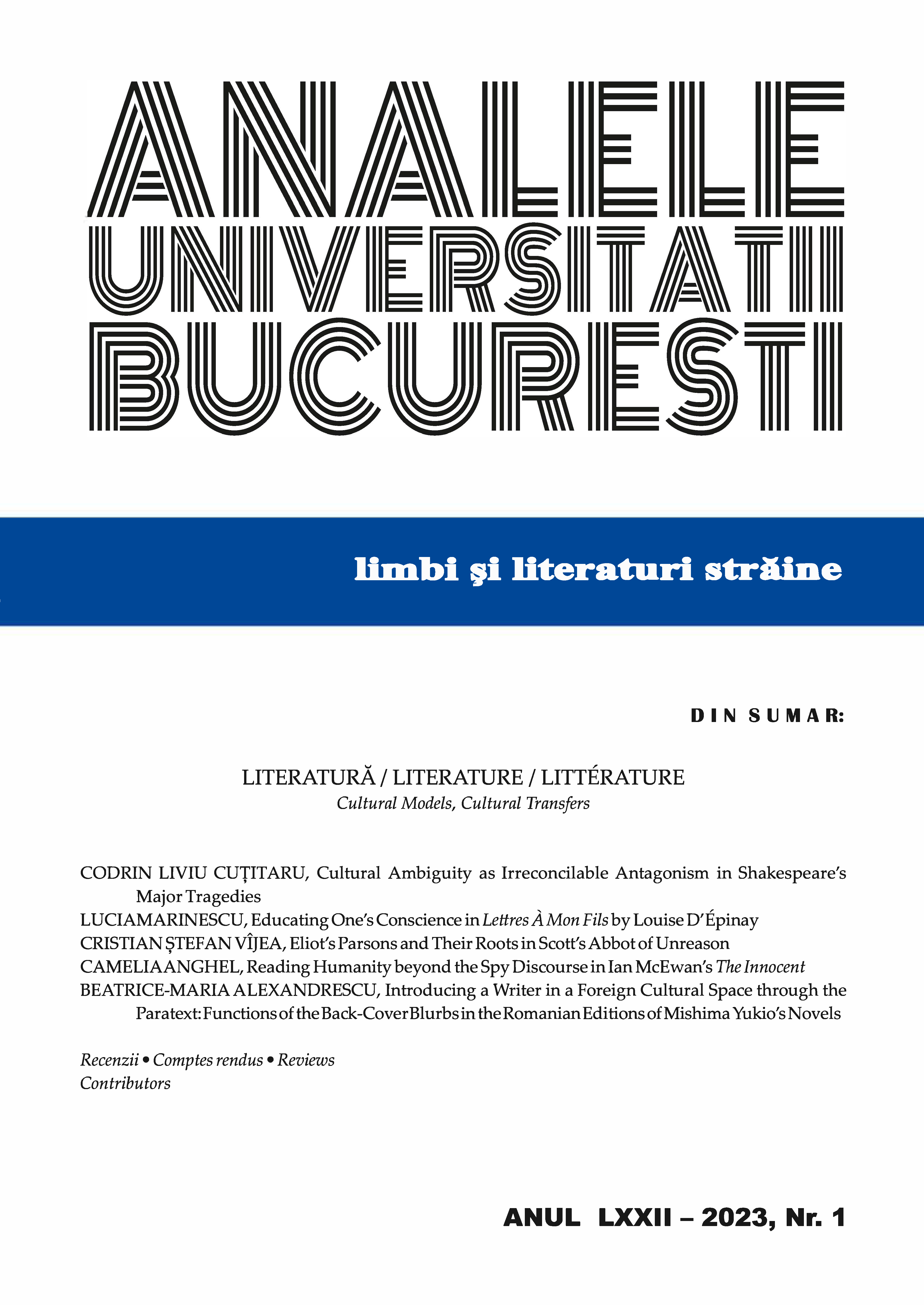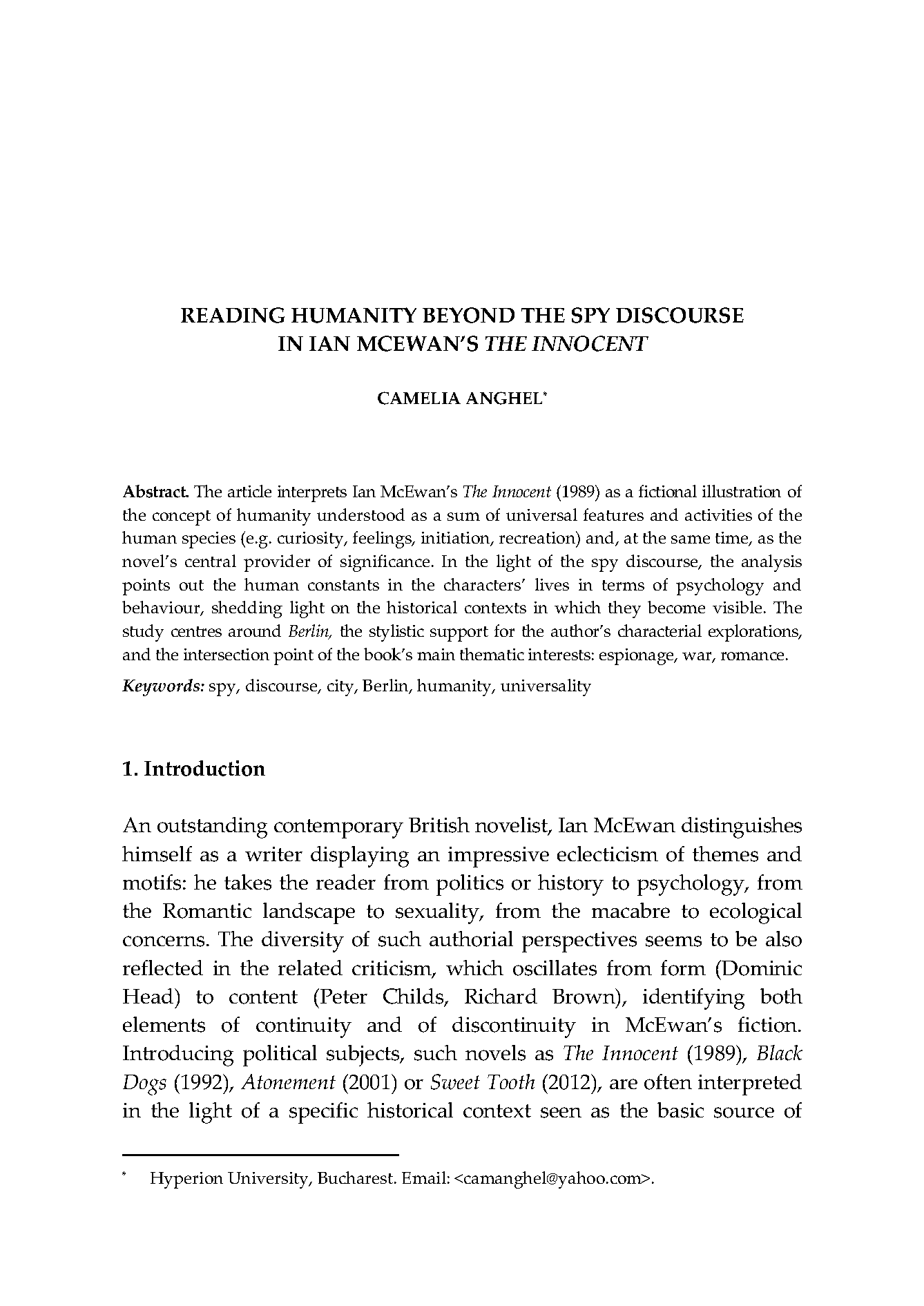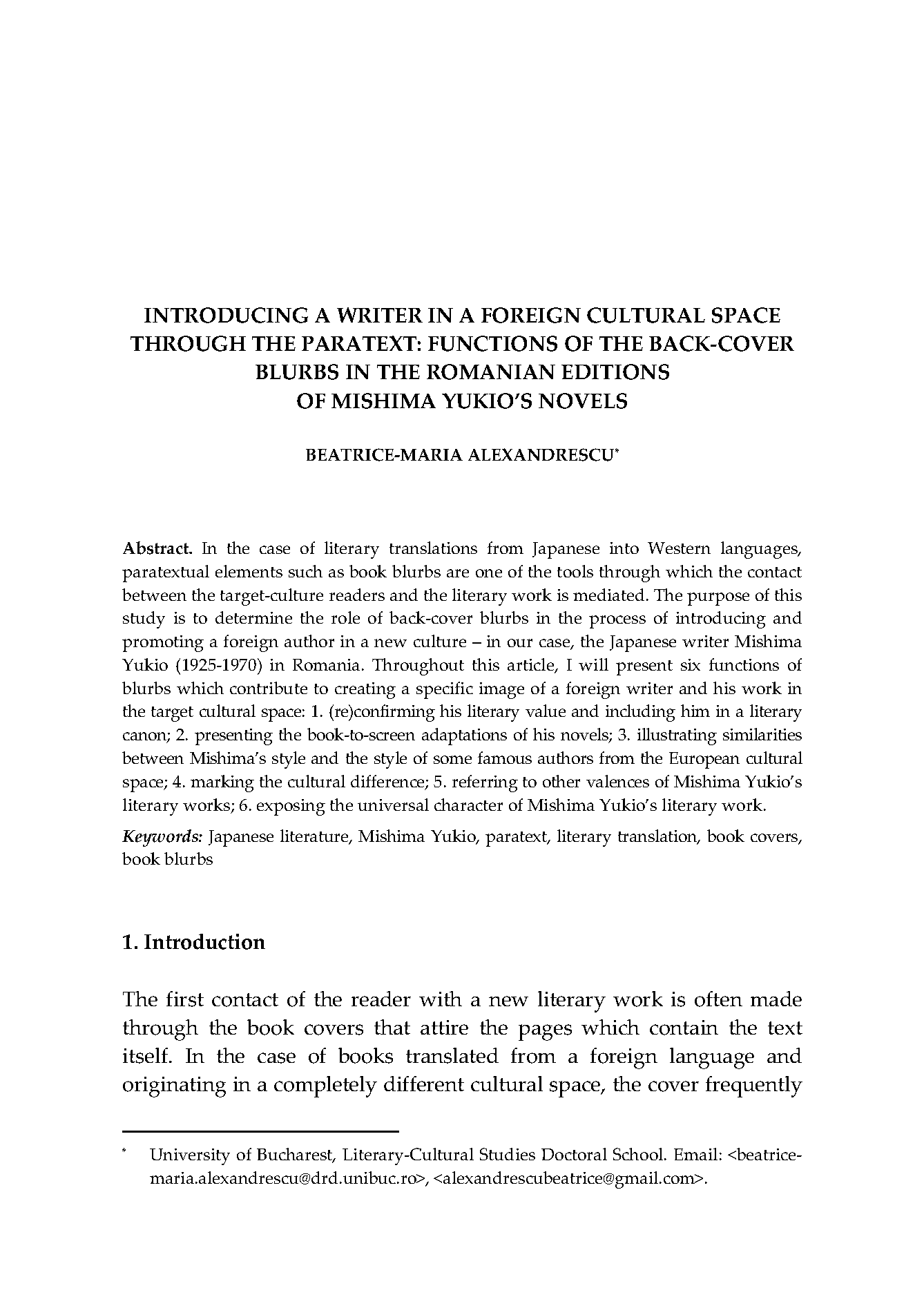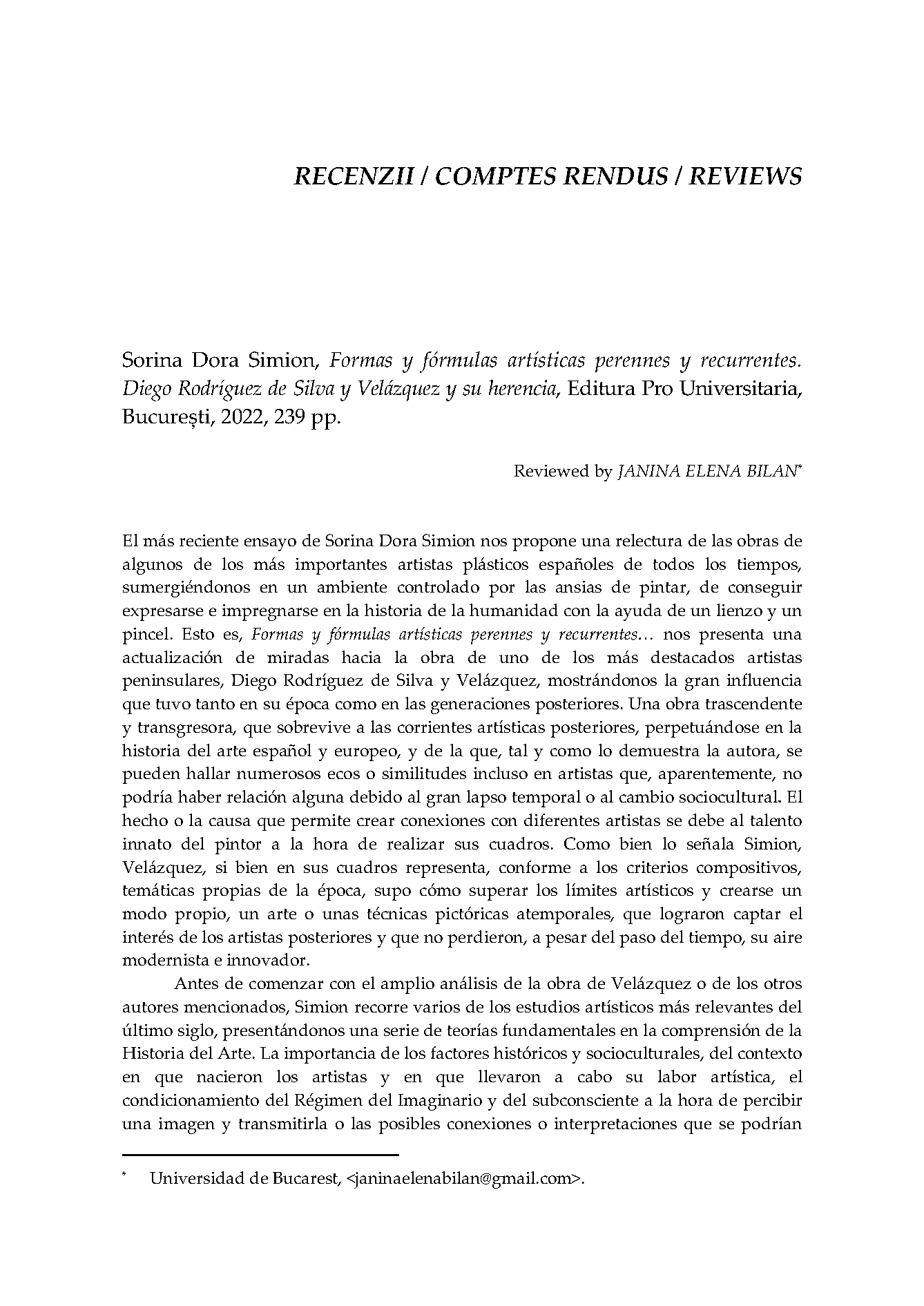Vol. 72 No. 1 (2023): ANALELE UNIVERSITĂŢII BUCUREŞTI LIMBI ŞI LITERATURI STRĂINE 2023 – Nr. 1

LITERATURĂ / LITERATURE / LITTÉRATURE
Cultural Models, Cultural Transfers
Articles
-
CULTURAL AMBIGUITY AS IRRECONCILABLE ANTAGONISM IN SHAKESPEARE’S MAJOR TRAGEDIES
Abstract
This paper aims at exploring the cultural ambiguity which William Shakespeare remarkably extracts from the sources of his major plays, turning it into an essential instrument of the tragic and the tragedy, i.e. into a form of irreconcilable conflict, antagonism. Therefore, what in normal/modern circumstances would appear as “plagiarism” becomes here a token of artistic genius and brilliant creation, the very nucleus of the tragic construction. We approach, from this angle, the four outstanding tragedies Hamlet, Othello, King Lear and Macbeth, intending to clearly define each one’s cultural (that is, tragic) conflict. Likewise, the sources of these masterpieces, Saxo Grammaticus’s Gesta Danorum, François de Belleforest’s Histoires Tragiques (for Hamlet), Cinthio’s Un Capitano Moro (for Othello), the Celtic legend Leir of Britain (for King Lear) and Holinshed’s Chronicles… (for Macbeth), are compared to their Shakespearean “avatars”, with the purpose of displaying the way in which the asserted antagonism manifests itself at the level of the “prototype”. The outcome of the critical investigation reveals that the so-called cultural ambiguity takes various forms in Shakespeare’s plays, going from the clash of civilizations (Hamlet and Othello) to the crisis of identity (King Lear and Macbeth).
-
ÉDUQUER SA CONSCIENCE DANS LETTRES À MON FILS DE LOUISE D’ÉPINAY EDUCATING ONE’S CONSCIENCE IN LETTRES À MON FILS BY LOUISE D’ÉPINAY
Abstract
In 1759, Louise d’Épinay published Lettres à mon fils, an epistolary work addressed to Louis Joseph de Lalive d’Épinay. The twelve letters summarize the educational principles she advocates for, as well as the concept of self-identity construction. I address the idea of educating one’s conscience and analyse the way in which the springs of one’s
personality are driven not by a society dominated by superficiality and artifice, but by the just principles of good and truth, as revealed by a conscience endowed with discernment and dedicated to achieving happiness, rather than aiming at one’s own satisfaction. I also discuss the idea of self-knowledge: the innate and acquired qualities that are to be continuously perfected by means of the will and effort and put in the service of the other, which also acts as a defence against any form of negative influence. An exercise in discernment, carefully directed towards oneself and the world, contributes to the refinement of conscience: in this sense, education must emphasize the role of language as the vehicle of truth and virtue as the essence of an honest man. The stage of childhood, for an aristocrat, is oriented towards discovering one’s vocation, which allows one to contribute to the improvement of society. -
ELIOT’S PARSONS AND THEIR ROOTS IN SCOTT’S ABBOT OF UNREASON
Abstract
Critical studies have analyzed George Eliot’s unconventional religious stance, Feuerbach’s influence and her atheism/religion of humanity. An early biography reveals, however, an interesting fact: “On the same grounds it is likely that the presentation of social virtues, apart from evangelical motives, would impress her; and I have authority
for stating that to the inquiry of a friend in after-years, as to what influence she attributed the first unsettlement of her orthodox views, she quickly made answer: ‘Oh, Walter Scott’s…’” (Cross 1878: 395).
Taking into account the quote above regarding probably the first source of her “unorthodox views”, the question naturally arises: are her fictional pastors and religious men fashioned according to her religious views and under the influence of Feuerbach’s doctrine? Can we assume a subtler influence at work coming from Walter Scott?
It is my claim that we can identify important elements in Eliot’s fictional parsons which point in the direction of Scott’s model of a hero: the ability to promote an ironic discourse; the ability to promote the flow of sympathetic exchange in dialogue with other people. Eliot’s parsons may have been outlined according to a literary, rather than religious pattern. How to account for Farebrother’s unconventional way of earning money or parson Jack’s turning the other cheek by throwing nuts at the audience that had bombarded him with rotten eggs? Unawares, Eliot’s clever moral system may have been influenced by her early readings. Small scale carnivalesque skills, unconventional behaviour and the ability to preserve dialogue with marginal characters point rather in the direction of Scott’s fictional hero.
While the research so far has focused on the model of historical novels in George Eliot’s work, little attention has been given to Scott’s influence on Eliot’s moral and psychological insights and the way in which she constructed important characters such as Rev. Farebrother, Rev. Rufus Lyon, parson Jack and other clergymen and religious non-conformists in her novels. -
READING HUMANITY BEYOND THE SPY DISCOURSE IN IAN MCEWAN’S THE INNOCENT
Abstract
The article interprets Ian McEwan’s The Innocent (1989) as a fictional illustration of the concept of humanity understood as a sum of universal features and activities of the human species (e.g. curiosity, feelings, initiation, recreation) and, at the same time, as the novel’s central provider of significance. In the light of the spy discourse, the analysis points out the human constants in the characters’ lives in terms of psychology and behaviour, shedding light on the historical contexts in which they become visible. The study centres around Berlin, the stylistic support for the author’s characterial explorations, and the intersection point of the book’s main thematic interests: espionage, war, romance.
-
INTRODUCING A WRITER IN A FOREIGN CULTURAL SPACE THROUGH THE PARATEXT: FUNCTIONS OF THE BACK-COVER BLURBS IN THE ROMANIAN EDITIONS OF MISHIMA YUKIO’S NOVELS
Abstract
In the case of literary translations from Japanese into Western languages, paratextual elements such as book blurbs are one of the tools through which the contact between the target-culture readers and the literary work is mediated. The purpose of this study is to determine the role of back-cover blurbs in the process of introducing and promoting a foreign author in a new culture – in our case, the Japanese writer Mishima Yukio (1925-1970) in Romania. Throughout this article, I will present six functions of blurbs which contribute to creating a specific image of a foreign writer and his work in the target cultural space: 1. (re)confirming his literary value and including him in a literary canon; 2. presenting the book-to-screen adaptations of his novels; 3. illustrating similarities between Mishima’s style and the style of some famous authors from the European cultural space; 4. marking the cultural difference; 5. referring to other valences of Mishima Yukio’s literary works; 6. exposing the universal character of Mishima Yukio’s literary work.
Book Reviews
-
Sorina Dora Simion, Formas y fórmulas artísticas perennes y recurrentes. Diego Rodríguez de Silva y Velázquez y su herencia Editura Pro Universitaria, București, 2022, 239 pp.
Abstract
l más reciente ensayo de Sorina Dora Simion nos propone una relectura de las obras de algunos de los más importantes artistas plásticos españoles de todos los tiempos, sumergiéndonos en un ambiente controlado por las ansias de pintar, de conseguir expresarse e impregnarse en la historia de la humanidad con la ayuda de un lienzo y un pincel. Esto es, Formas y fórmulas artísticas perennes y recurrentes… nos presenta una actualización de miradas hacia la obra de uno de los más destacados artistas peninsulares, Diego Rodríguez de Silva y Velázquez, mostrándonos la gran influencia que tuvo tanto en su época como en las generaciones posteriores.









